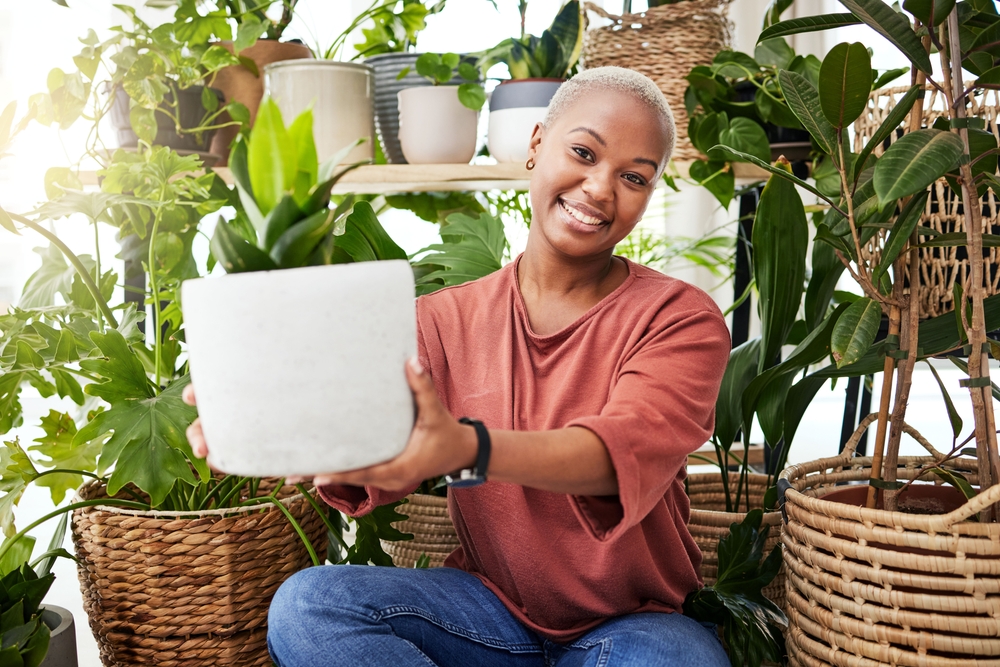Living sustainably isn’t just a trend; it’s a necessity for the health of our planet. The good news is that creating a sustainable and eco-friendly home is easier than you might think. It involves making small changes to your daily habits and incorporating features that reduce your environmental impact. This guide will equip you with the knowledge and practical steps to transform your living space into a haven of eco-consciousness.
Why sustainable living matters
Our homes are significant contributors to environmental concerns. Traditional practices like high energy consumption, excessive water usage, and waste generation put a strain on natural resources. Sustainable living aims to minimize this impact by promoting resource conservation and eco-friendly practices.
Here are some compelling reasons to embrace a sustainable lifestyle:
- reduces your environmental footprint
- saves money
- improves your health
- creates a more comfortable home
Embracing sustainability throughout your home
Creating a sustainable home goes beyond just recycling. It’s a comprehensive approach that considers every aspect of your living space. Here are key areas to focus on:
Energy efficiency is the cornerstone of sustainable living. Look for ways to reduce your reliance on conventional energy sources.
- Upgrade appliances: invest in Energy Star-certified appliances that use less energy to perform the same tasks.
- Smart power strips: use power strips with on/off switches to eliminate phantom energy drain from electronics on standby mode.
- Harness natural light: maximize natural light by opening curtains during the day and strategically placing furniture.
- LED lighting: switch to LED light bulbs, which are significantly more energy-efficient than traditional incandescent bulbs.
- Smart thermostat: install a programmable thermostat to regulate temperature efficiently based on your schedule and preferences.
- Seal air leaks: drafty windows and doors can significantly increase energy consumption. Seal any air leaks around windows, doors, and other openings.
water conservation every drop counts! Here’s how to make the most of this precious resource.
- Low-flow fixtures: replace old showerheads and faucets with low-flow models to decrease water usage without sacrificing performance.
- Fix leaks: even a small leak can waste gallons of water. Promptly address any leaks in faucets, pipes, or toilets.
- Shorter showers: every minute counts! Aim for shorter showers to reduce hot water consumption.
- Full loads only: run dishwashers and washing machines only when they are full to maximize water efficiency.
- Water-wise landscaping: choose native plants that require minimal watering and utilize mulch to retain moisture in the soil.
Waste reduction and recycling reduce, reuse, and recycle! This mantra is key to minimizing waste.
- Mindful shopping: avoid impulse purchases and choose products with minimal packaging.
- Reusable bags: ditch single-use plastic bags and opt for reusable shopping bags made from cloth or recycled materials.
- Composting: create nutrient-rich fertilizer for your plants by composting food scraps and yard waste.
- Repurpose and repair: before throwing something away, consider if it can be repaired, repurposed, or donated.
- Recycle diligently: familiarize yourself with your local recycling guidelines and diligently sort your waste for proper recycling.
Sustainable materials when making upgrades or renovations, consider the environmental impact of the materials you choose.
- Locally sourced: opt for building materials sourced locally to reduce transportation emissions.
- Recycled content: choose materials with recycled content whenever possible.
- Sustainable wood: when using wood, ensure it comes from responsibly managed forests with sustainability certifications.
- Low-VOC paints: opt for low-volatile organic compound (VOC) paints that minimize air pollution and improve indoor air quality.
Creating a sustainable and eco-friendly outdoor space
Your outdoor space can also be a haven for sustainability. Here are some tips:
- Rain barrels: collect rainwater in rain barrels to use for watering plants, reducing reliance on tap water.
- Compost bin: create a compost bin for food scraps and yard waste to generate nutrient-rich fertilizer for your garden.
- Native plants: choose native plants that require minimal watering and attract beneficial pollinators like bees.
Living a sustainable lifestyle: Beyond your home
Sustainability is a journey, not a destination. While the focus of this guide has been on creating a sustainable home, these principles extend far beyond your living space. Here are some ways to embrace eco-conscious living in your everyday routine:
- Transportation: consider alternative modes of transportation like walking, biking, or using public transport whenever possible. If driving is necessary, choose fuel-efficient vehicles or carpool to reduce your carbon footprint.
- Food choices: opt for local, seasonal produce to minimize transportation emissions and support local farmers. Reduce food waste by planning your meals, buying only what you need, and storing food properly.
- Conscious consumerism (continued): look for brands with sustainable practices, such as using recycled materials or offering eco-friendly products and services.
- Support sustainable businesses: seek out businesses committed to sustainability, such as those using recycled materials or offering eco-friendly products and services.
Small steps, big impact
Creating a sustainable home and lifestyle doesn’t require drastic changes. Even small adjustments to your daily habits can significantly reduce your environmental impact. Remember, every action counts. As you incorporate sustainable practices into your routine, you’ll not only benefit the environment but also experience the satisfaction of living a more conscious and eco-friendly life.

















